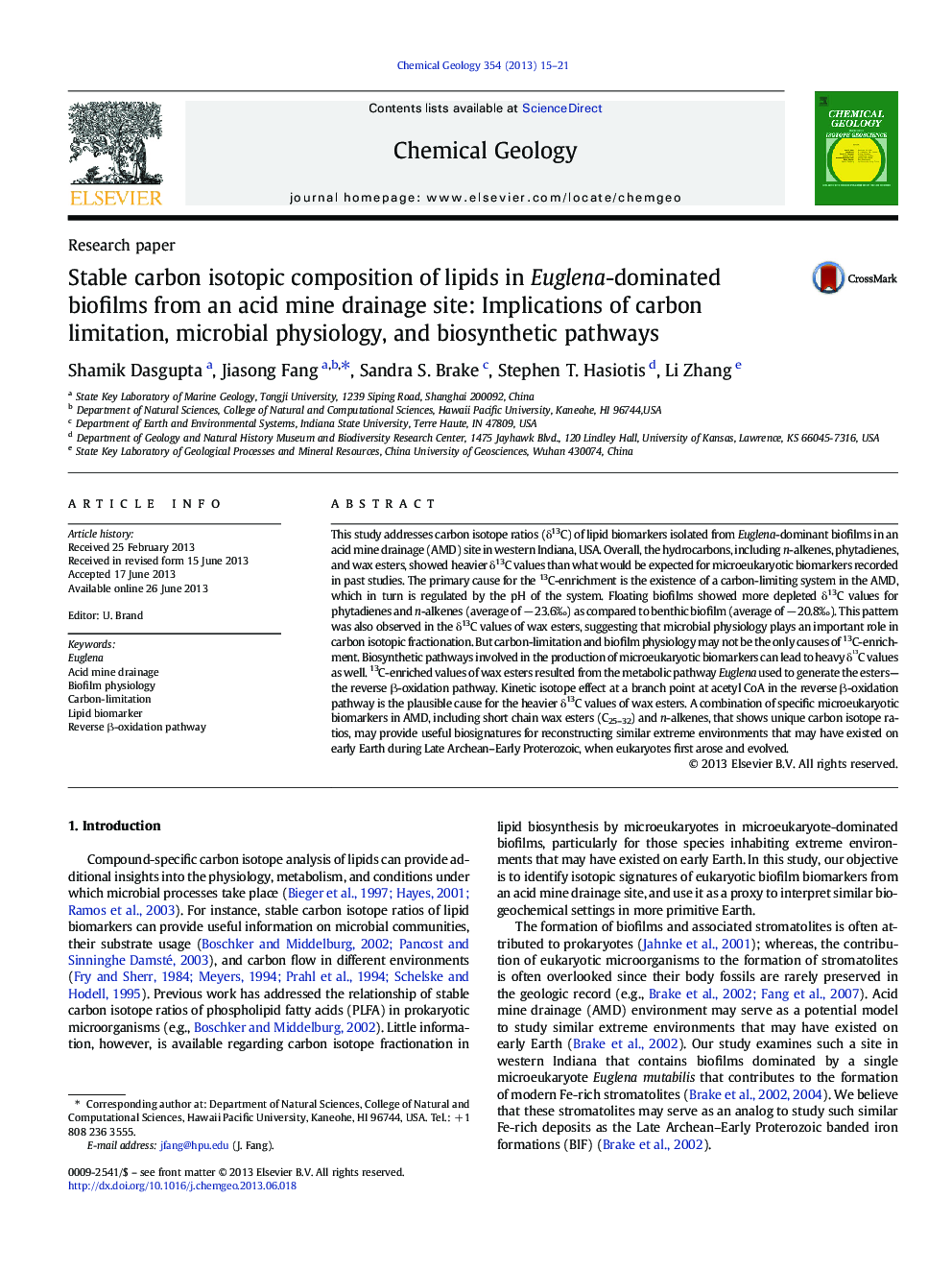| Article ID | Journal | Published Year | Pages | File Type |
|---|---|---|---|---|
| 6436829 | Chemical Geology | 2013 | 7 Pages |
â¢Heavy δ13C of hydrocarbons from Euglena-dominated biofilms in an AMD siteâ¢Primary cause for the 13C-enrichment is the existence of a carbon-limiting system.â¢Difference in biofilm physiology is another cause of the heavy δ13C values.â¢Kinetic isotope effects in lipid biosynthesis via the reverse β-oxidation can result in the 13C-enriched wax esters.â¢Our study may provide us with a unique set of biosignatures for eukaryotes in the early Earth.
This study addresses carbon isotope ratios (δ13C) of lipid biomarkers isolated from Euglena-dominant biofilms in an acid mine drainage (AMD) site in western Indiana, USA. Overall, the hydrocarbons, including n-alkenes, phytadienes, and wax esters, showed heavier δ13C values than what would be expected for microeukaryotic biomarkers recorded in past studies. The primary cause for the 13C-enrichment is the existence of a carbon-limiting system in the AMD, which in turn is regulated by the pH of the system. Floating biofilms showed more depleted δ13C values for phytadienes and n-alkenes (average of â 23.6â°) as compared to benthic biofilm (average of â 20.8â°). This pattern was also observed in the δ13C values of wax esters, suggesting that microbial physiology plays an important role in carbon isotopic fractionation. But carbon-limitation and biofilm physiology may not be the only causes of 13C-enrichment. Biosynthetic pathways involved in the production of microeukaryotic biomarkers can lead to heavy δ13C values as well. 13C-enriched values of wax esters resulted from the metabolic pathway Euglena used to generate the esters-the reverse β-oxidation pathway. Kinetic isotope effect at a branch point at acetyl CoA in the reverse β-oxidation pathway is the plausible cause for the heavier δ13C values of wax esters. A combination of specific microeukaryotic biomarkers in AMD, including short chain wax esters (C25-32) and n-alkenes, that shows unique carbon isotope ratios, may provide useful biosignatures for reconstructing similar extreme environments that may have existed on early Earth during Late Archean-Early Proterozoic, when eukaryotes first arose and evolved.
